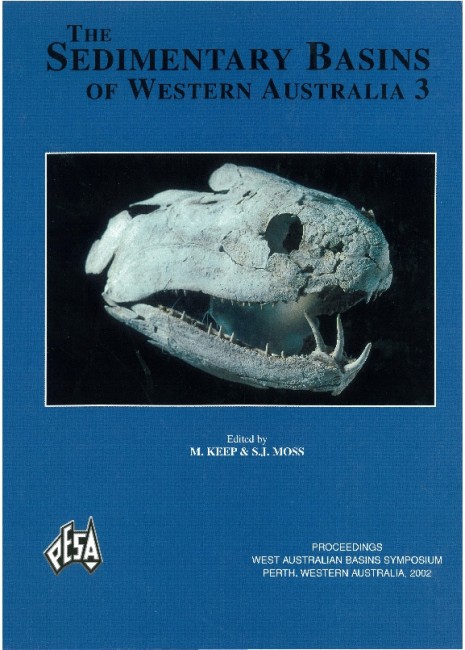Publication Name: The Sedimentary Basins of WA
Authors: G. Chen, K.C. Hill & N. Hoffman
Publication Volume: 3
Date Published: December 2002
Number of Pages: 29
Reference Type: Book Section
Abstract:
A 3D structural model of the Vulcan Sub-basin, Timor Sea was constructed through interpreting and depth converting Geoscience Australia's VTT survey. The model was progressively back-stripped, decompacted and restored to reveal its palaeo-architecture in the Valanginian, Late Eocene and Late Miocene, which correspond to major periods of hydrocarbon expulsion, as interpreted by Kennard et al. (1999). Knowing the palaeo-architecture of the Plover Formation reservoir horizon at those times, the up-dip migration paths over the reservoir horizon have been determined to constrain the source risk for prospective traps. Two models for the source kitchen were tested, one using a minimum 140?C isotherm and the second using a saturation-based expulsion model, with expulsion driven by compaction.Migration path modelling using the saturation-based expulsion model is consistent with the drilling results of the discovery wells and dry holes, and confirms breaching of the structures at Allaru, Paqualin, Puffin and Swan, and preferential gas leakage in the East Swan and Skua fields. The only discrepancy is the oil/gas found in Oliver, indicating probable oil generation in the central Cartier Trough.
The methodology is ideal for application in a commercial environment using detailed modern 3D datasets, and will be of greater utility in areas with less tectonic reactivation than in the Vulcan Sub-basin. Since the precise details of palaeo-architecture can have a strong effect on individual trap risk through charge focusing and migration shadowing, it is vital that the effects of subtle tectonic movements and regional tilting are recognised and included in prospect risking to maximise exploration success.


